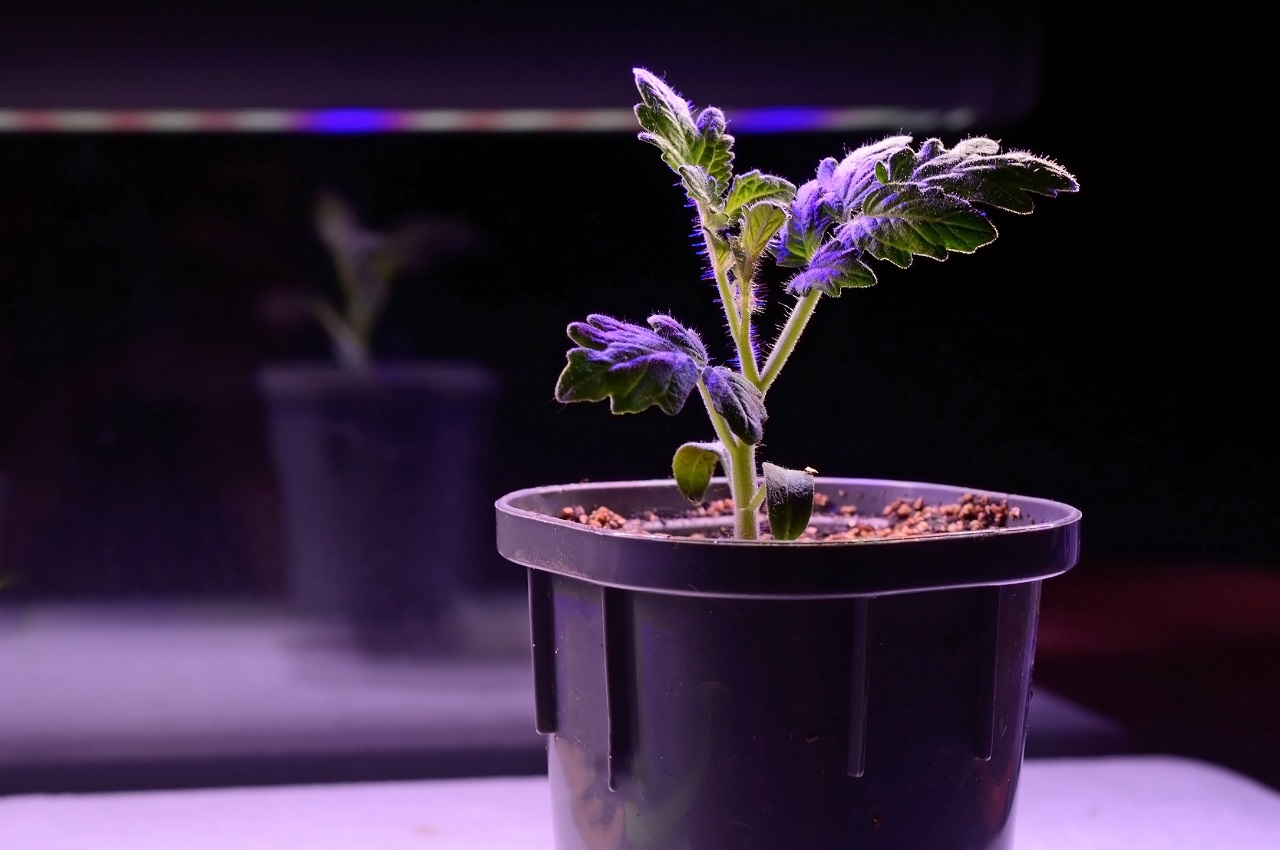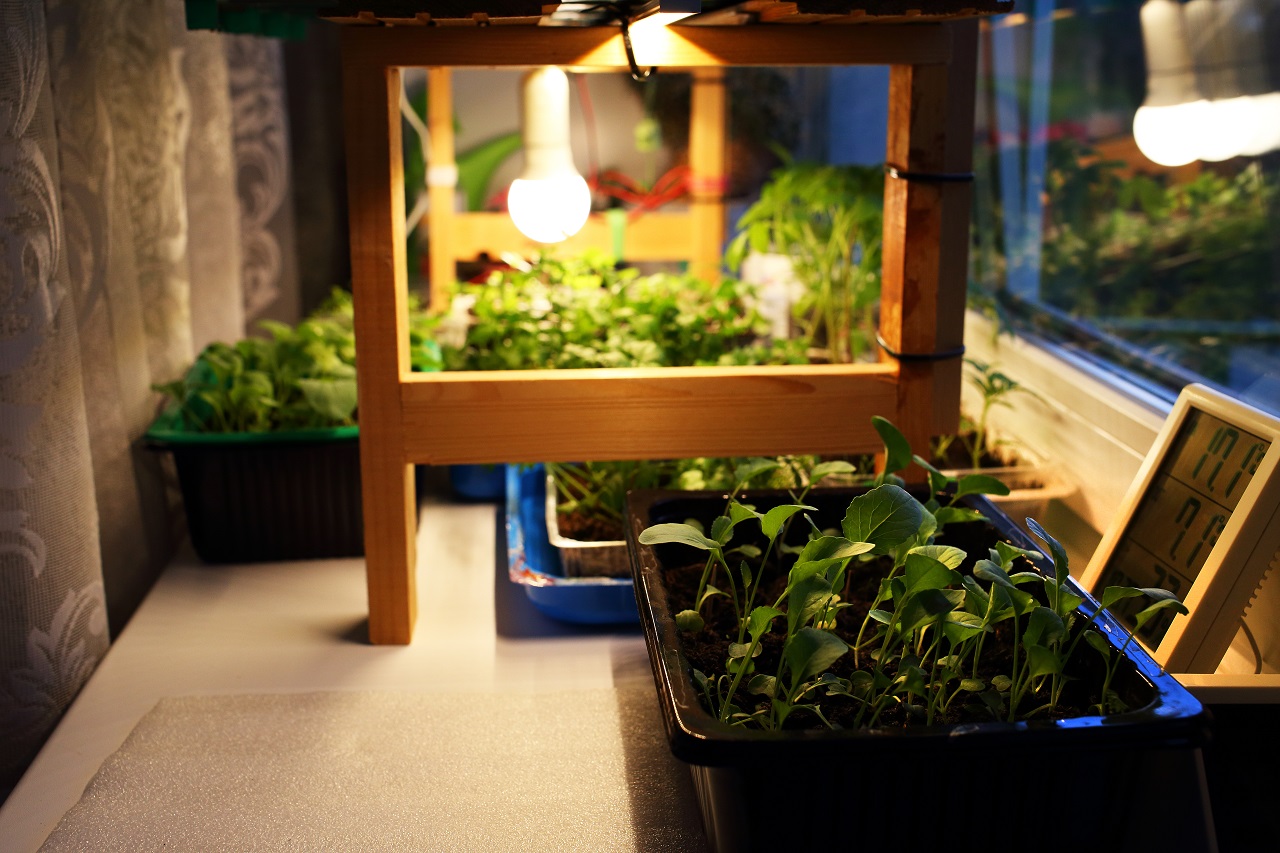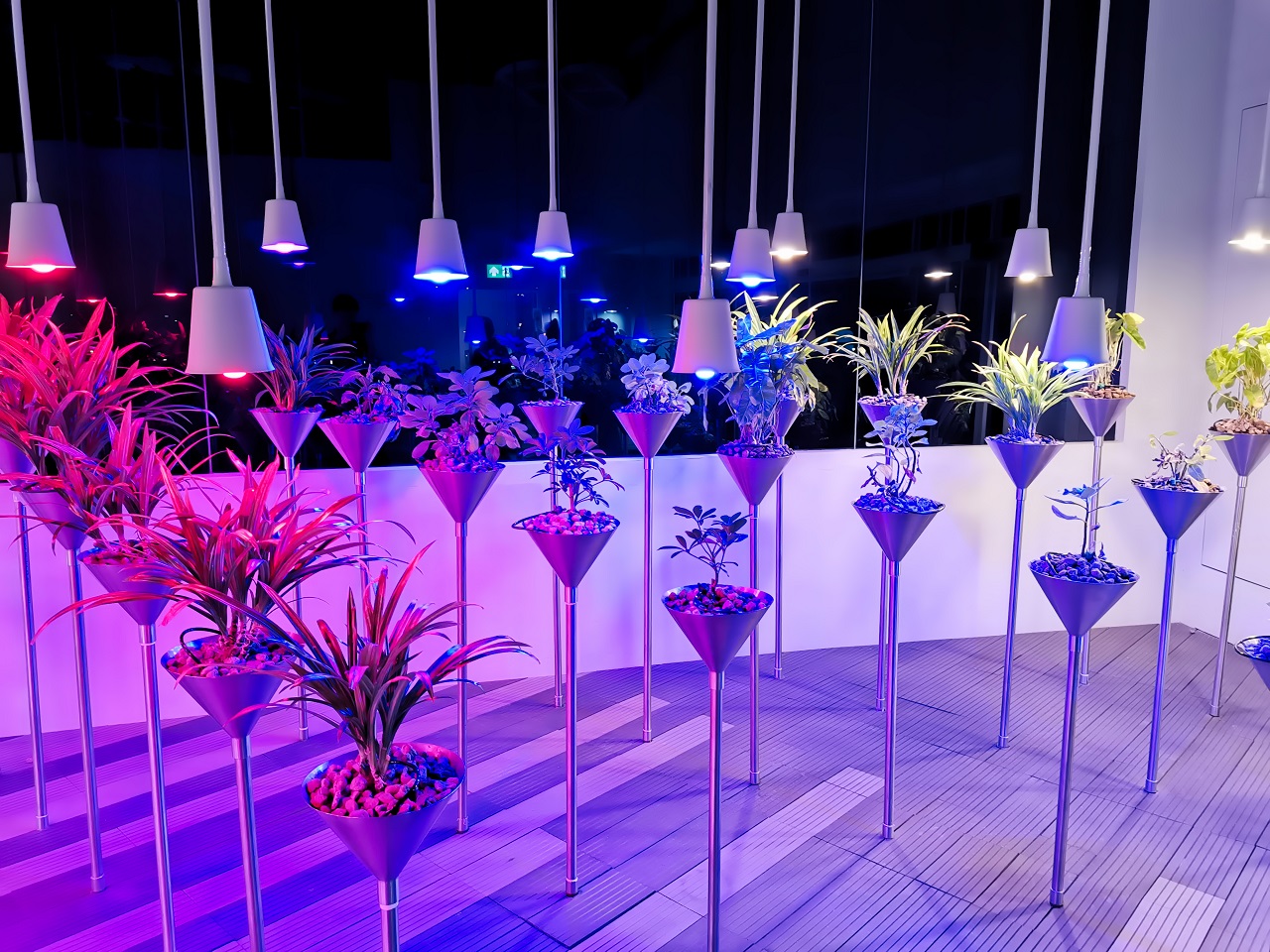If you’re a newcomer to indoor gardening, we’d like to clear up a common misconception right off the bat…
Not only do indoor plants need light, most of them need all the light they can get to achieve robust and leafy growth.
And the kicker?
You can’t necessarily rely on natural sunlight penetrating the windows to deliver the light your plants need to thrive.
Fortunately, with the right set of grow lights, you can step in to give nature a helping hand.
So, whether you’re looking to help your plants flourish, or you like the idea of growing some veggies, herbs, and flowers indoors, even if you live in a basement or an apartment, you’re in luck.
I. Grow Lights 101
Plants convert the energy from light into food using the process of photosynthesis.
While some plants can get away with very low lighting, others need lots of natural and direct sunlight to thrive.
You’ll find different plants call for different light cycles, too. Some plants need just 8 hours of light daily, while others demand up to 18 hours of light to achieve their full potential.
With some plants, you’ll find they respond differently to different light wavelengths, and you may find this varies over the course of their life cycle. Light at the blue end of the spectrum promotes foliage growth, while light from the red end of the spectrum is ideal for both flowering and fruiting.
The most effective grow lights capitalize on this, offering your plants a full spectrum of light.
More on the different types of light, then…
II. You Need Different Colors of Lights for Different House Plants
The light plants use can be broadly cleaved into two:
- Cool light
- Warm light
Cool light
Blue, green, and violet are all located at the cool end of the spectrum of light.
In most cases, violet light is only beneficial in combination with red and blue light. It serves to enhance the taste and smell of the plant, as well as influencing its color.
Blue light, by contrast, is essential for the growth of plants. The chlorophyll in plants absorb blue light, and it’s a vital component of photosynthesis.
Plants will reflect the vast bulk of green light – the primary reason most plants are green – although they still require some green light for the purposes of growth.
Warm light
You’ll find yellow, orange, and red light at the warm end of the spectrum.
Red light is key for plant growth, particularly when combined with blue light. If you want stronger plants with more vegetation and superior flowering, ensure they are getting enough red light.
To signal germination and to regulate flowering, far-red light is ideal.
While yellow and orange light don’t serve as central a role for plants, they are still useful for overall growth.
III. What Is Full Spectrum Light?
If you invest in some full spectrum grow lights, you’ll be giving your plants the next best thing to real sunlight.
Natural sunlight contains all spectrums of light, including infrared and ultraviolet light, neither of which are visible to the naked eye.
As outlined above, red and blue light take center stage for plant growth. That said, if you don’t give your plants enough light from other wavelengths, you’ll end up with weaker plants, and you’ll possibly even end up stunting their growth.
So, with that framework in place, how can you go about bringing the right grow lights home?
IV. Choosing The Best Grow Lights the Easy Way
- Type of grow light
- Color and intensity of light
- Lights with a timer
- Decorative lighting
Type of grow light
These are the most popular types of grow lights for indoor plants:
- LED grow lights
- Fluorescent grow lights
- Incandescent grow lights
- HID grow lights
LED grow lights
LED lights are the most energy-efficient type of grow lights. The lights are made of myriad tiny diodes, each emitting light. Resultantly, you’ll get more brightness than traditional lights without using too much electricity to run them.
With LED grow lights, you’ll give your plants light from all wavelengths, but without too much heat.
Fluorescent grow lights
You find fluorescent grow lights in lengthy tubes or in CFL (compact fluorescent reflector) form. CFL lights have spiral bulbs.
Fluoro lighting doesn’t kick off too much heat, and the light is relatively easy on the eye.
These lights can offer full spectrum lighting for both vegetation and flowering, and they do so in an energy-efficient way.
Incandescent grow lights
The cheapest of all grow lights, incandescent lights are readily available at hardware stores and grocery stores.
The amount of heat these grow lights gives off makes it quite easy to scorch your plants. Beyond this, they don’t last long, and they are not energy-efficient, so consider this type of grow light as a last resort.
HID grow lights
HID (high-intensity discharge) lights replicate natural sunlight very closely.
The gas-filled bulbs and electrodes deliver brilliantly bright light ideal for vigorous plant growth.
All that remains is to consider the right type of grow lights for your indoor garden.
Color and intensity of light
If you are growing light houseplants, you can use fluorescent or incandescent lighting with confidence. These can be used comfortably at close range.
For more ambitious indoor gardens, you might need to step up to some LED lights or HID grow lights.
Lights with a timer
The sunlight requirements of plants can be categorized as follows:
- Short-day plants: 12 hours or less of daily light
- Long-day plants: 14 to 18 hours of daily light
- Day-neutral plants: 8 to 12 hours of daily light
If you feel it will be tough for you to conform to that schedule for any reason, you can find many grow lights with timers.
Decorative lighting
If your primary purpose for grow lights is decorative rather than functional, you can find plenty of attractive lighting that will also give your indoor plants a helping hand.
So, having chosen your lights to suit your needs, where should you position grow lights relative to your plants?
V. Grow Lights: Placement
If you install hanging grow lights, this is the closest approximation of natural sunlight you can give your plants. When using this type of grow light, ensure the light is not angled for the most even distribution of light. If you deprive plants of light from all angles, it will end up growing tilted in the direction of the grow light.
When you are using incandescent grow lights, always position these at least 2 feet from your plants. This kind of lighting emits a great deal of heat, and this could easily damage the foliage of your plants.
For fluorescent grow lights, leave 1 foot between the lights and your plants, altering the distance as the plant grows.
Giving off practically no heat, LED grow lights can be positioned to within 6 inches of your plants, with no niggling worries about scorching the leaves.
So far, so good, but how long do you need to keep your lights running for?
VI. How Long Should Grow Lights Run For?
When you expose your plants indoors to light, they will immediately set to work photosynthesizing.
This means overexposure to light will cause the plants to burn out, sometimes physically.
As a rule of thumb, most plants respond favorably to 8 hours of darkness in every 24 hours, sometimes a little more. During periods of darkness, the plants use the stored energy to grow and also to flower.
So, for the majority of house plants, 8 to 10 hours of light daily will help them thrive. You will find that flowering plants need a little more light than this.
Consistency counts so consider using a timer and you should have healthy and vibrant plants indoors.
VII. Is It Possible to Use Traditional Lights Instead of Grow Lights?
As a parting shot, maybe you’re thinking you could get away with using some regular lights instead of grow lights.
There are two reasons why that’s not a smart move: heat and wavelengths.
Regular lighting only delivers narrow wavelengths of light, depriving your plants of the red light vital for photosynthesis and subsequent growth.
Also, traditional lights give off so much heat that they often scorch the foliage of indoor plants.
Grow lights, by contrast, support the process of photosynthesis by delivering multiple wavelengths of light, as well as lighting tailored to the specific needs of your plants.
With minimal heat, energy-efficient grow lights are by far your best bet.
VIII. Conclusion
Whether you’re new to growing plants indoors or an experienced gardener, we hope you enjoyed today’s capsule guide to choosing and using grow lights indoors.
Once you have determined the right lighting solution for your needs, installing and using your lighting should be straightforward.
Don’t forget to bookmark Wild River Country before you head off today. We have a super-busy content calendar over the coming months and we update our content daily, so pop back soon and don’t miss out!



